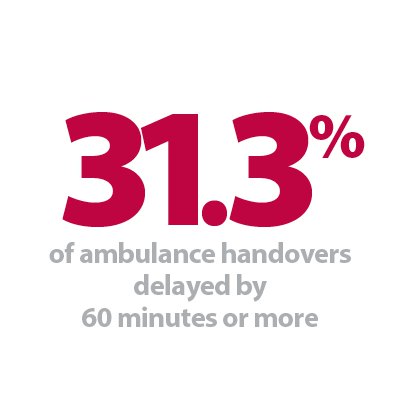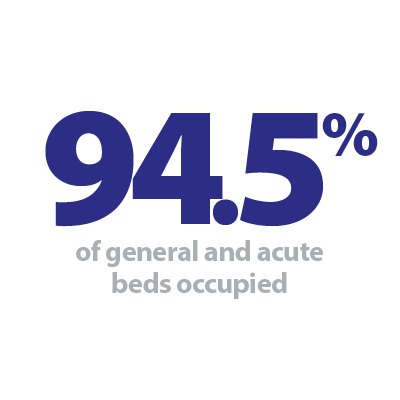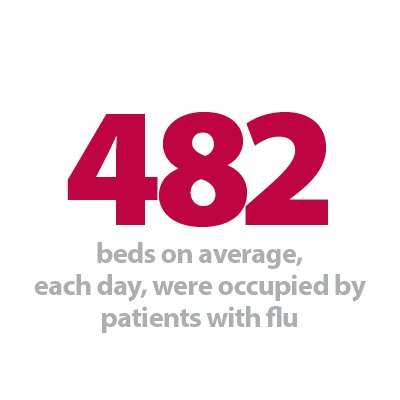


Introduction
Our NHS Winter Watch 2022/23 series starts today following the early release of the winter situation report (sitrep) data from NHS England. Every Thursday until the end of February, we will be tracking key activity and demand figures across the NHS. We will analyse the data, highlighting key trends to understand the pressure trusts are under throughout the winter.
Trust leaders are extremely concerned about winter pressures, as shown by the findings of our recent State of the provider sector survey. These new weekly NHS England figures will give us timely insight into the performance of trusts across England.
From next week we will be able to compare data to previous years, highlighting changes and putting the current figures into perspective.
We will also have contributions from our members and stakeholders to connect those numbers with the real-life experiences of trusts and staff working on the frontline.
Winter sitrep (21 – 27 November)
A&E closures: There were no A&E closures this week.
A&E diverts: There were 10 A&E diverts this week, 10 fewer than the week prior.
Ambulance arrivals: A total of 77,054 patients arrived by ambulance. A decrease of 2.6% since last week and down by 8.2% compared to the same week last year.
Ambulance handovers: 31.3% of ambulance handovers were delayed by 30 minutes or more, up from 28.9% last week and up from 23.1% at the same point last year. 14.8% were delayed by 60 minutes or more. This is up from 12.7% last week and up from 9.8% since the same week last year.
Critical care: Adult critical care bed occupancy is at 79.6% this week; this is a similar level to the week before (79.6%).
D&V: The number of beds closed due to diarrhoea and vomiting (D&V) and norovirus has increased this week, with an average of 161 closed per day. This is up from 130 last week.
Discharges: There were an average of 23,261 patients each day who no longer met the criteria to reside, an increase of 76% (10,082 more). Of these, over half (57%, 13,364) remained in hospital, a smaller proportion than the week prior (75%) but still more than a quarter higher than last year (10,510).
Flu: This week the average number of G&A beds occupied by flu patients each day increased by 40% to 482. An average of 38 critical care beds were occupied by flu patients each day this week (30% more than the week before).
General and acute (G&A) beds: There were an average of 99,243 G&A beds open each day across all acute trusts. On average each day, 216 G&A beds were unavailable and void to non-COVID admissions. Average bed occupancy remains the same as last week at 94.5%.
Long stay: The number of patients staying in hospital longer than seven and 14 days has slightly increased since last week (up by 0.7% and 0.3% respectively), but those staying longer than 21 days has fallen by 1.4%.
Neonatal intensive care beds: For all trusts, bed occupancy has increased from last week and is at 68.7%; this is up from 68.3% last week. The average number of care beds open is at 1,675, 1% higher than last week.
Paediatric intensive care beds: For all trusts, bed occupancy has increased this week to 89.6%, up from 89.0% last week. The average number of care beds open has fallen this week to 378, down by 6.2%. The average number of care beds available has fallen to 39 (5 fewer than last week).
Staff absences: There were an average of 52,556 total absences each day this week, of which 10% were COVID-19 related (5,448). The total number of staff absences has increased from the week before, but the proportion of COVID-19 related absences has slightly decreased from 11%.
Our view
This week's data highlight the significant pressures hospitals and their local systems are under as the winter season begins, with high demand and a surge in seasonal illnesses.
Bed occupancy remains alarmingly high at nearly 95%, and we are seeing a high proportion of beds occupied with flu patients, COVID-19 patients and patients medically fit for discharge, all of which severely impacts the capacity available in hospitals across the country. Delayed discharges also signal system wide pressures across the health and social care sector. We are seeing over half of medically fit patients remaining in hospital on any given day.
Additionally, data showed how the urgent care pathway is being challenged, with demand for ambulances remaining stable but high. The proportion of handover delays has risen, with nearly a third of all arrivals taking 30 minutes or more to handover to hospital.
Trust leaders are rightfully concerned about a "storm" brewing, with staff absences also increasing, which will continue to exacerbate seasonal pressures, particularly if COVID-19 community prevalence sees another uptick. These staffing absences sit against the backdrop of new data also published today that shows over 133,000 NHS staff vacancies across the NHS in the second quarter of this year.
Having the right number of staff, with the right skills, in the right places will remain a daily challenge for trusts across the country. These staffing gaps continue to exacerbate existing seasonal pressures, as trusts contend with multiple other challenges, including strike action and recovering backlogs across physical and mental health services.
Supporting staff health and wellbeing in an acute NHS trust
The first case study comes from Royal Berkshire NHS Foundation Trust. The organisation's occupational health nurse manager, Dwayne Gillane discusses how the trust is supporting staff health and wellbeing.
The Royal Berkshire NHS Foundation Trust is one of the largest general hospital foundation trusts in the country which provides acute and specialist care services for west Berkshire. It has approximately 5,500 staff employed across various roles in the trust.
The trust vision 2025 strategy includes a key objective to 'invest in our people and live out our values'. While the trust staff health and wellbeing (H&WB) strategy 2020-2023 core theme is 'supporting your health' and focuses on three key areas, mental wellbeing, physical wellbeing and healthy lifestyles.
Occupational health led on the H&WB strategy working with colleagues to deliver a range of support services to staff. One of the recurring challenges experienced was finding a space to provide wellbeing initiatives.
During COVID-19 the physiotherapy outpatient building, which was not in use due to lockdown, became our temporary staff wellbeing centre. This became a hub for staff to go to during breaks and a drop off point for donations of food. In addition during wave one and two of COVID-19 a variety of locations had to be found to provide over 150 psychological support session to our staff.
In November 2019 the trust recruited a full time staff health wellbeing lead who formed part of the occupational health team. In addition, a grade two listed building was identified as the site for a new staff wellbeing centre.
Combining investment from the trust and a generous donation to our trust charity, work began on establishing a new staff health and wellbeing centre.
A working group was established to oversee the development of the new centre. This included a dedicated project manager, representatives from estates, occupational health, staff health and wellbeing, trust charity, staff side union representatives, senior managers and the chief people officer.
Trust staff were included in voting for the name of the new facility and the 'Oasis staff health and wellbeing centre' was born.


In October 2022 the Oasis staff health and wellbeing centre opened its doors to staff and now provides the following facilities;
- cardiac exercise room with two bicycles, two cross trainers and two treadmills
- weight rooms with five separate weights machines
- showers and changing rooms, toilet facilities
- exercise room for Yoga/Pilates etc, with a moveable ping pong table when not in use
- large lounge with recliner chairs and access to the garden
- kitchen with free tea and coffee, microwaves, fridges
- TV room with recliner chairs
- activity room
- conference room (with IT access to virtual meetings)
- two quiet rooms providing space for staff to have time out or to be used for wellbeing meetings between managers and staff.
A new full time staff health and wellbeing coordinator has also been recruited which doubled the staff health and wellbeing team. Their role will focus on coordinating a set programme of classes and achieving high utilisation of the Oasis by staff.
In addition to the Oasis the trust is working on a new garden facility, phase one is complete with staff able to access the garden space direct from the Oasis lounge and has a number of benches and tables available for use.
Phase two of the garden project is well underway and due to complete in 2023 and will offer staff a quiet zone, rain garden and pond, edible forest garden, reflection space as well as a working section for allotment type activities.
The Oasis building provides a dedicated space for wellbeing activities to take place and our staff health and wellbeing team have relocated to the centre.
Our Trauma Risk Management (TRiM) service now has dedicated facilities to use as needed in the event of a TRiM intervention being required while new mediation training is being provided within the Oasis building.
Trust teams receiving psychological support from our local wellbeing matters hub can come away from the clinical space and use the Oasis for their support sessions.
A new staff health check+ project has commenced from the Oasis offering all staff over 40 years old a free health check, over 700 staff booked an appointment within the first week of launch.
The Royal Berkshire NHS Foundation Trust continues to demonstrate the importance of supporting the health and wellbeing of its people with the most recent recruitment of a dedicated clinical lead psychologist for a staff psychological support service who will commence in post in early 2023.
The trust recognises having staff who are fit, healthy and happy at work has a direct impact on the quality of care we deliver to our patients.
NHS Providers responds to NHS England's urgent and emergency care figures
Responding to NHS England's second weekly winter figures for urgent and emergency care for 2022/23, Miriam Deakin, interim deputy chief executive and director of policy and strategy at NHS Providers, said:
"Trust leaders have done all they can to prepare for seasonal pressures, but their concern that this winter could be their hardest is fast becoming reality.
"Hospitals are running hot due to high demand, including a surge in the number of patients in hospital with flu, ongoing COVID-19 pressures, and delays discharging patients. Bed occupancy remains above levels considered safe.
"In the last week, over 13,000 patients a day were well enough to go home but couldn't, which is partly caused by the lack of capacity in social care and community services. Huge pressures were also felt in the ambulance pathway, with a third of all ambulance arrivals now waiting 30 minutes or more to transfer patients. This reflects pressure across the entire system, including high demand for mental health and community services. Trust leaders are well aware of the risks this may pose as well as the huge disruption and distress this can cause to patients and staff.
"Workforce pressures across the NHS show no sign of easing with new figures out today underlying the sheer scale of the challenge facing the health service with a staggering 133,000 vacancies across the health system. Staffing gaps continue to exacerbate seasonal pressures as trusts contend with multiple other challenges, including strike action and recovering backlogs for planned care.
"To alleviate the 'perfect storm' of winter pressures, the government must take action to fix chronic staff shortages. We would also encourage the government and all parties to come to a rapid agreement to avert planned industrial action."